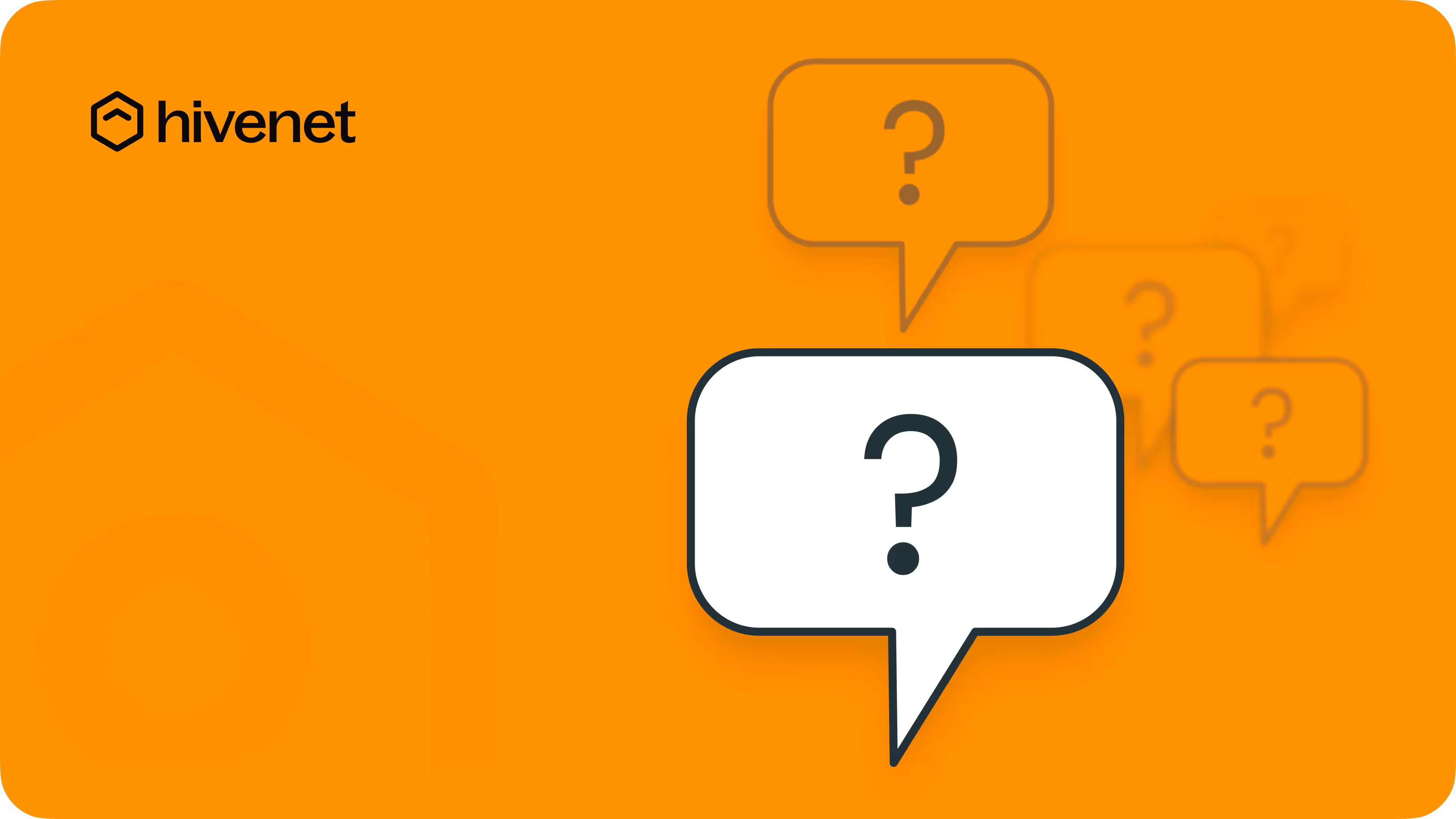
Harnessing computing services has become critical for businesses navigating AI compute, machine learning, and big data cloud computing. These technologies demand vast high-performance computing (HPC) provider resources, flexibility, and scalable cloud computing. Distributed compute providers like Hivenet promise these benefits by linking multiple computing resources into a unified, powerful network. AI cloud computing enables services that facilitate machine learning, such as serverless computing, batch processing, and container orchestration, further enhancing the efficiency of these technologies.
But picking the best cloud compute provider for AI workloads isn’t straightforward. Managing cloud costs is essential when selecting a provider to ensure expenses are controlled and optimized. Here’s a guide to help you ask the right questions and confidently select the ideal cloud computing solution for your business. Additionally, securing customer data is crucial to prevent breaches that could lead to significant reputational and financial damage. The use of AI in cloud computing enables businesses to automate processes, gain a competitive edge, and explore new opportunities. AI software can derive impartial interpretations from data-driven insights, fueling efficiency in business processes.
Understanding cloud computing
What is cloud computing?
Cloud computing is a transformative model for delivering computing services over the internet. Instead of investing in and maintaining physical hardware and software, businesses and individuals can access a wide array of resources—such as servers, storage, databases, and applications—on a pay-as-you-go basis. This model offers unparalleled flexibility, allowing users to scale resources up or down based on demand, which leads to significant cost savings. By leveraging cloud computing, organizations can focus on their core activities without worrying about the underlying infrastructure. Cloud computing allows businesses to rent IT services instead of investing in hardware and software. AI and cloud computing improve business efficiency and allow IT talent to focus on innovative development.
Cloud infrastructure and data centers
At the heart of cloud computing lies the cloud infrastructure, a complex network of hardware and software components that work together to deliver seamless services. Central to this infrastructure are data centers—massive facilities equipped with thousands of servers, storage systems, and networking equipment. These data centers are the backbone of cloud service providers, enabling them to offer reliable and scalable services to their customers. Cloud service providers control the physical infrastructure required for cloud computing, including servers, hard drives, and cooling systems. Microsoft Azure delivers AWS-like cloud computing services through the Azure Cloud in over 116 Availability Zones.
Leading cloud service providers like Amazon Web Services (AWS), Microsoft Azure, and Google Cloud Platform (GCP) operate numerous data centers worldwide. This global presence ensures high availability and low latency, making it possible for users to access their services quickly and efficiently, no matter where they are located. By distributing their data centers across various regions, these providers can offer robust performance and redundancy, crucial for maintaining business continuity. The Google Cloud Platform offers services that have carved a niche across Artificial Intelligence (AI), Machine Learning (ML), Data Analytics, and Kubernetes. Amazon Web Services (AWS) delivers over 200 cloud services across multiple industries and technology categories.

1. Which compute resources do you actually need?
Your workloads determine your cloud compute needs. Start by clearly defining what tasks you’ll perform:
- Cloud computing for machine learning: GPU-intensive workloads benefit from GPU cloud computing for training AI models.
- Big data cloud computing: Large-scale analytics require scalable AI compute solutions with strong CPU and storage support.
- High-performance computing (HPC) provider: Simulations and engineering applications need enterprise-grade cloud computing with minimal latency.
- Supply chain management: Integrating AI with cloud computing can streamline operations within supply chain management by enabling real-time data processing and automation of routine tasks, thus improving overall business performance.
Also, evaluate:
- Resource flexibility: Will your tasks vary in intensity? Opt for a distributed compute provider with easily scalable, on-demand cloud computing services.
- Growth potential: Consider how your cloud computing solutions might evolve. Ensure your provider can scale resources quickly without downtime or performance dips. Businesses can leverage existing cloud-skilled professionals to drive AI adoption.
Knowing your exact needs prevents costly over-provisioning of cloud compute resources and ensures optimal performance. Effective data management in the context of AI and cloud computing enhances cloud workloads and enables real-time data processing across various applications. AI tools assist in managing customer service, marketing, and supply chain operations by automating data analysis and generating actionable insights. AI tools embedded in cloud platforms can be used to monitor and manage cloud components in a hybrid environment.
2. Are pricing models clear and predictable?
Cloud compute cost comparison is essential for controlling expenses. Managing and controlling cloud costs is crucial, especially for companies utilizing multiple cloud service providers. Implementing cloud cost management tools and strategies can optimize visibility and reduce expenditure in a pay-as-you-go model. Watch for these pricing factors: The rise of AI is driving significant investment in cloud services, with spending on public cloud services forecasted to increase significantly by 2027.
- Pay-as-you-go vs. reserved pricing: Flexible cloud computing pricing is ideal for unpredictable workloads, while reserved instances reduce long-term costs.
- Data transfer fees: Hidden costs for data ingress and egress can significantly impact your budget.
- Discount structures: Some cloud computing providers offer discounts for high-volume compute usage or long-term commitments.
Always request a detailed cloud compute pricing breakdown or use cost calculators for cloud computing. Clear pricing models help businesses reduce cloud computing costs and plan budgets accurately.
3. Can the provider guarantee performance and reliability?
When selecting a distributed compute provider, focus on:
- High availability: Look for 99.9% uptime guarantees backed by strong cloud SLAs. Hivenet offers robust performance and reliability guarantees, often surpassing those of other cloud service providers like Rackspace and Oracle.
- Low-latency cloud compute: Best cloud provider for AI workloads should meet latency needs for real-time applications.
- Infrastructure robustness: Distributed compute should have data center locations that enhance performance and redundancy.
Reliable enterprise cloud computing ensures business continuity and consistent performance.
4. Is the platform user-friendly and secure?
Great tech doesn’t mean complicated interfaces. A user-friendly cloud computing provider enables efficient cloud infrastructure management and enhances productivity.
Key usability considerations include:
- **Intuitive dashboards:**Best cloud compute providers offer easy-to-use dashboards for managing resources.
- **Robust API integrations:**Cloud computing solutions for AI and ML should support automation and workflow optimization.
Security is equally critical:
- Compliance certifications: Ensure cloud computing services meet GDPR, ISO 27001, and SOC 2 standards.
- Data protection measures: Look for strong cloud security, encryption, and routine security audits to protect customer data.
Balancing ease of use with robust security for cloud computing helps teams operate smoothly and securely, ensuring that customer data remains protected in cloud environments.
5. What support and customization are available?
Every business has unique compute needs. Best cloud compute providers offer custom configurations and strong support:
- Custom compute configurations: Choose providers that tailor hardware and software setups.
- 24/7 customer support: Enterprise cloud computing services should offer real-time assistance.
- Onboarding assistance: AI and machine learning cloud computing services should ensure smooth deployment. Businesses can deploy off-the-shelf AI applications at a lower cost than developing in-house solutions by using AIaaS.
Effective customer support for cloud computing saves time and prevents costly downtime.

Getting started with cloud computing
Choosing the right cloud provider and the problem with Big Tech’s cloud dominance
Selecting a cloud provider isn’t just about comparing services—it’s about understanding the power dynamics at play in the cloud industry. The major players—AWS, Microsoft Azure, and Google Cloud—have built monopolistic empires, locking businesses into their ecosystems with opaque pricing, restrictive contracts, and aggressive vendor lock-in strategies. These companies don’t just offer cloud computing; they dictate the rules of the game, using their dominance to stifle competition, exploit smaller businesses, and extract maximum profits while presenting themselves as indispensable. Amazon Web Services comprises over 34% of the global cloud computing market share. 70% of companies acquire their AI capabilities through cloud-based software.
Big Tech’s cloud services prioritize market control over user empowerment. AWS, for example, uses its vast infrastructure and deep pockets to undercut competitors and push smaller cloud providers out of the market. Microsoft Azure, leveraging its enterprise software monopoly, bundles services in ways that make switching away from its ecosystem nearly impossible. Google Cloud, despite its innovations in AI and data analytics, has a track record of abruptly shutting down services, leaving businesses stranded without long-term stability.
Security and compliance, often touted as top priorities, are convenient marketing points rather than true commitments. These corporations have extensive government contracts and data-sharing agreements, raising concerns over user privacy. Meanwhile, their pricing structures remain intentionally convoluted, with hidden fees for data transfer and vendor-specific APIs and discounts that require long-term financial commitments—all designed to keep customers dependent.
Instead of blindly choosing one of these cloud giants, businesses should consider alternatives that offer true transparency, fair pricing, and user-first policies. Distributed cloud providers like Compute with Hivenet provide scalable, secure, and cost-effective solutions without forcing businesses into predatory pricing models. The cloud industry doesn’t have to be ruled by a few dominant players—it’s time to push back against Big Tech’s control and seek out providers that prioritize innovation, openness, and fair competition.
Why choose Compute with Hivenet?
Hivenet’s distributed computing solution is built for businesses and developers who need scalable, cost-efficient compute power for AI, ML, and big data analytics. Here’s why it stands out: Nutanix has partnered with NVIDIA and Mellanox Technologies to create an AI-ready hybrid cloud infrastructure.
- Global network of compute resources: Hivenet taps into a vast distributed infrastructure, ensuring high availability and performance.
- On-demand and flexible pricing: Whether you need pay-as-you-go compute or reserved instances for cost savings, Hivenet provides transparent pricing.
- Optimized for AI and big data: Hivenet’s compute services are designed to handle GPU-heavy AI training, real-time data processing, and HPC workloads effortlessly.
- Seamless API integration: Developers can integrate Hivenet Compute into their workflows with ease, leveraging automation and powerful orchestration tools.
- Security and compliance first: With adherence to GDPR, ISO 27001, and SOC 2, Hivenet ensures your workloads are protected with enterprise-grade security.
- Round-the-clock support: 24/7 technical support ensures you get the help you need whenever you need it.
- Business intelligence: Hivenet's AI-powered analytics improve data management and decision-making, helping organizations leverage business intelligence to streamline workflows and enhance service quality.
Hivenet delivers enterprise-level cloud computing with a distributed edge, making it a compelling alternative to traditional cloud providers. Whether you’re running intensive AI models or scaling a business-critical application, Hivenet Compute offers the power, flexibility, and efficiency you need.

Key takeaways for choosing cloud service providers
Selecting the best cloud provider for AI workloads impacts your ability to harness scalable cloud computing effectively. Evaluating needs, understanding pricing, and ensuring strong support will set your business up for success.
Choose a distributed compute provider that aligns with your financial, technical, and operational goals. A cloud computing provider for big data analytics should offer flexibility, security, and scalability.
Frequently Asked Questions (FAQ) about Distributed Computing and Cloud Compute
What is a distributed computing service?
A distributed computing service enables multiple computers or servers to work together as a single system to process tasks efficiently. It allows businesses to leverage decentralized resources to enhance performance, scalability, and cost efficiency.
What is an example of a distributed computing system?
Examples include cloud computing platforms like Compute with Hivenet, Hadoop for big data processing, and blockchain networks where nodes work collectively to process transactions.
What are distributed computing services?
Distributed computing services provide on-demand access to compute power across multiple servers or devices. These services are commonly used for AI training, big data analytics, and large-scale simulations.
What is meant by distributed services?
Distributed services refer to cloud-based or networked computing environments where different components, such as storage, compute power, and applications, are spread across multiple physical or virtual locations.
What is a cloud computing provider?
A cloud computing provider offers remote access to computing resources like virtual machines, storage, and networking. Companies like Hivenet, AWS, Microsoft Azure, and Google Cloud provide these services.
What are compute services in the cloud?
Compute services in the cloud refer to the virtualized processing power offered by cloud providers. These services enable users to run applications, process data, and perform computations without needing physical hardware.
What is scalable in cloud computing?
Scalability in cloud computing refers to the ability to increase or decrease computing resources based on demand. This ensures optimal performance and cost-effectiveness without requiring infrastructure changes.
What is an example of scalability in computing?
An example of scalability is a company using Hivenet Compute to train an AI model. If demand increases, the platform automatically allocates additional GPU and CPU resources to handle the workload.
What are the three main components of scalability?
The three main components of scalability are:
- Vertical scaling (Scaling up) – Adding more power (CPU, RAM) to existing machines.
- Horizontal scaling (Scaling out) – Adding more machines to handle increased demand.
- Elasticity – Automatically adjusting resources based on real-time needs.
What is an HPC provider?
A high-performance computing (HPC) provider delivers infrastructure optimized for processing complex computations, such as scientific simulations, AI training, and financial modeling.
What is an example of high-performance computing (HPC)?
HPC examples include weather prediction models, medical research simulations, and AI-driven image recognition platforms.
What is enterprise computing in the cloud?
Enterprise cloud computing refers to cloud services tailored for large organizations, offering high availability, security, and compliance for business-critical applications.
What are the different types of enterprise cloud computing?
The main types include:
- Public cloud – Shared cloud resources accessible to multiple users.
- Private cloud – Dedicated infrastructure for a single organization.
- Hybrid cloud – A combination of public and private clouds for flexibility.
- Multi-cloud – Utilizing multiple cloud providers to optimize performance and cost.
What is AI compute?
AI compute refers to the processing power required for running artificial intelligence models, including GPUs, TPUs, and specialized cloud computing services optimized for machine learning.
What is the cloud for running AI models?
The cloud provides AI developers with scalable infrastructure, including GPUs and AI frameworks, to train, test, and deploy machine learning models without maintaining on-premise hardware.
Which cloud is best for machine learning?
The best cloud provider depends on specific needs. Hivenet Compute offers cost-efficient, scalable AI compute, while AWS, Google Cloud, and Azure also provide strong AI capabilities.
What is latency in cloud computing?
Latency refers to the time it takes for data to travel between a user's request and the cloud provider’s response. Low latency is crucial for real-time applications like AI inference and gaming.
How can latency be reduced in cloud computing?
Latency can be reduced by:
- Choosing cloud providers with geographically distributed data centers.
- Using edge computing to process data closer to end users.
- Optimizing network configurations and caching frequently accessed data.
Is cloud computing affordable?
Cloud computing is cost-effective for businesses due to its pay-as-you-go pricing models, reducing upfront infrastructure costs and allowing organizations to scale resources as needed.
Which cloud is best for startups?
Hivenet Compute is a strong option for startups looking for affordable and scalable compute power. AWS, Google Cloud, and Azure also offer startup credits and flexible pricing models.
